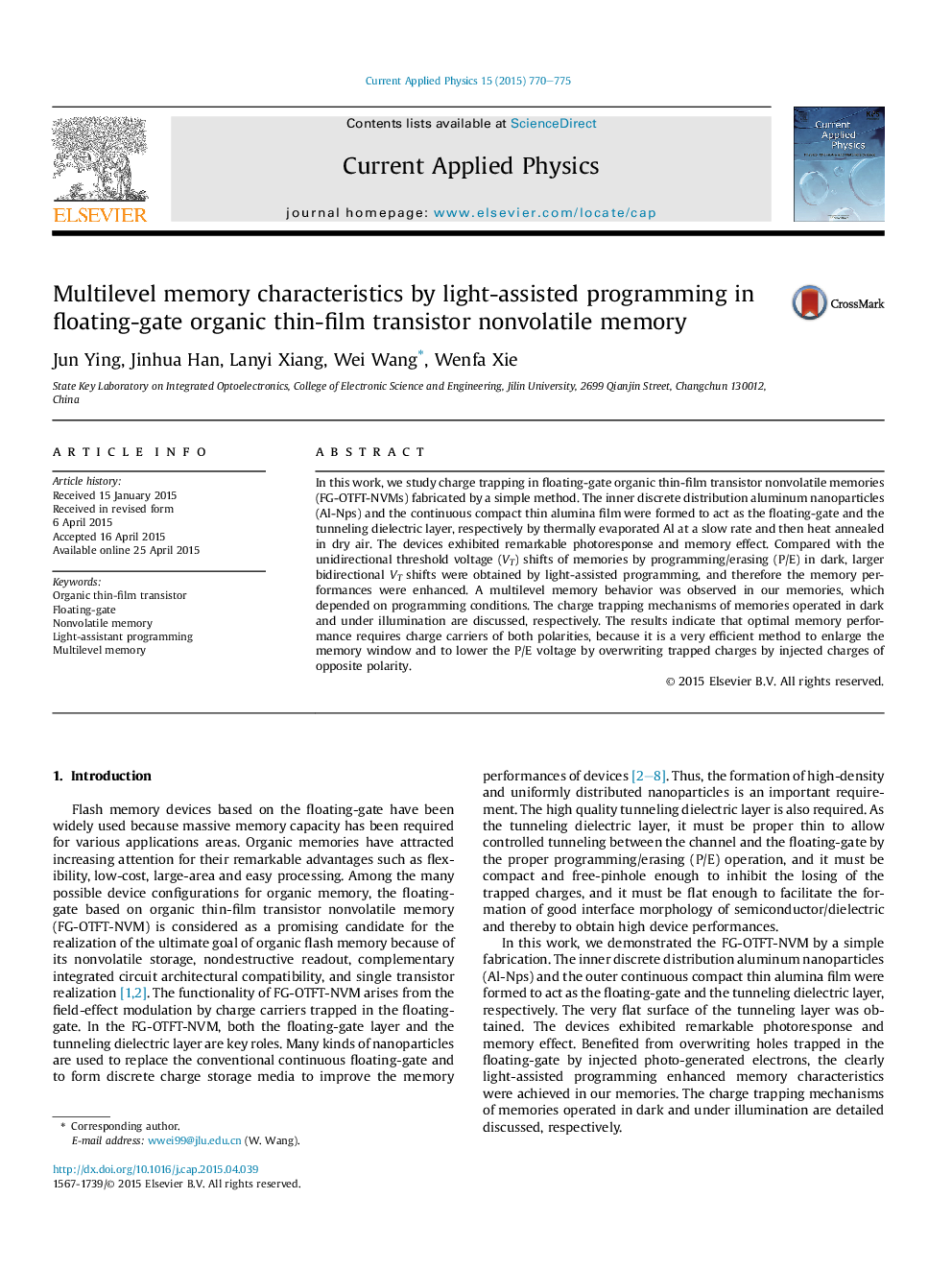| Article ID | Journal | Published Year | Pages | File Type |
|---|---|---|---|---|
| 1785774 | Current Applied Physics | 2015 | 6 Pages |
•OTFT memory based on floating-gate was realized by a simple method.•The memory characteristics were enhanced by light-assisted programming.•The charge trapping mechanisms of memory were detailedly discussed.•The present device has a potential application as a multilevel memory.
In this work, we study charge trapping in floating-gate organic thin-film transistor nonvolatile memories (FG-OTFT-NVMs) fabricated by a simple method. The inner discrete distribution aluminum nanoparticles (Al-Nps) and the continuous compact thin alumina film were formed to act as the floating-gate and the tunneling dielectric layer, respectively by thermally evaporated Al at a slow rate and then heat annealed in dry air. The devices exhibited remarkable photoresponse and memory effect. Compared with the unidirectional threshold voltage (VT) shifts of memories by programming/erasing (P/E) in dark, larger bidirectional VT shifts were obtained by light-assisted programming, and therefore the memory performances were enhanced. A multilevel memory behavior was observed in our memories, which depended on programming conditions. The charge trapping mechanisms of memories operated in dark and under illumination are discussed, respectively. The results indicate that optimal memory performance requires charge carriers of both polarities, because it is a very efficient method to enlarge the memory window and to lower the P/E voltage by overwriting trapped charges by injected charges of opposite polarity.
Graphical abstractFigure optionsDownload full-size imageDownload as PowerPoint slide
